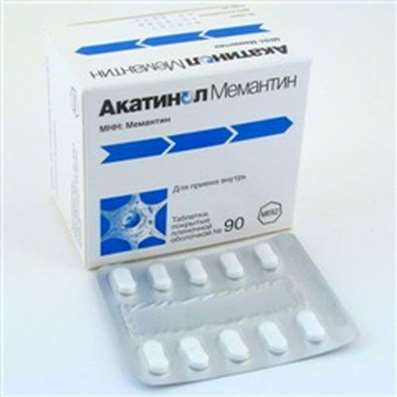New technologies in the treatment diseases of vision
06 Nov 2016
The biologist Dr. Doping tells about Leber's congenital amaurosis, age-related eye diseases, and transplantation of embryonic stem cells. How to use gene therapy in cure genetic diseases of the eye? Why eyesight deteriorates with age? What are the results obtained transplantation of retinal pigment epithelial cells of the eye, grown from embryonic stem cells?
Eye is a special human instrument, which resembles - and we all know - cameras. After the light that passes through the lens is fixed - previously fixed on a photographic film, on film, but now fixed on a special substrate, which receives the pixels receives individual light pulses and converts into various signals. Just like any camera, any lens, the human eye is arranged. Thus, this lens, the light passes through the lens, and in contact with it or a film or a matrix containing the pixels, a signal of the image.
To support eyes - buy Cytamins Oftalamin bioregulator of eyes, Complex of cytamins for the visual system, Peptides (Cytomax) Visoluten, Peptide complexes in solution Peptide complex 17.
Clearly, we can pick up and drop the camera, and it will break - will not pass light. Randomly can be knocked pixels, as now there are dead pixels on a TV, they also have in their cells, are defective pixels, and the light will be lost where a pixel is divided. The same thing happens in humans when starting eye diseases. For example, there is an inherited genetic disorder as Leber's congenital amaurosis. This is due to the fact that mutation occurs in a particular gene that is responsible for just decision signal, that is conventionally called, for a pixel. Because this gene works in all the retinal cells of the eye, that receives light signals, it turns out that the entire matrix has dead pixels, people live in darkness.
Only one gene - and blindness from birth to end of life. But it turned out that if we restore, correct function of this gene, it may recover sight. This was done not so long ago, in 2010, the journal Science published a study. Gene that has been damaged in these individuals, RPE65, in its normal form was inserted into the adenoviral vector. We all know adenoviruses, adenovirus infection, we are sick of this infection every year and this adenovirus can be manipulated. So we put it in the normal gene RPE65, and such adenovirus dripped into the eyes of those people who have the genetic disease hereditary.
We all know how easy adenovirus infects our mucous membranes, just as easily, this specially designed virus infected mucous eye, penetrated the cells and restore the function of the damaged gene. It was really like a kind of miracle. Of course, the vision is not fully back, of course, about this, because this is the beginning, it is too early to say. But people got out of the total darkness, they began to distinguish dark gray images, at least they could not bump into objects, that is, began to focus. This is a very big achievement.
In fact there is not only genetic diseases of the eye, but also diseases that are associated with age. After eye perceives light quanta, and thus perceived they certain photoreceptor cells, so that there is damage to a particular type of protein, the effect of a particular protein, and this signal, the quantum of light, converted into a pulse, and then goes through the nervous system and is detected as a fragment of or other images.
Because that light rays fall on the protein, it is, of course, over time it becomes defective and must be removed. The photoreceptor cells of this special protein exfoliated and thrown out, because he has become old, it can not well perceive a quantum of light. Special cells that are close to the photoreceptor, absorb the wrong protein, removing it.
There is a continuous operating time of the protein, the arrival of the light, the fixation light, the protein used is removed from the cell and is absorbed by other cells that cleanse this space.
How this can happen? This can not be infinitely long, with age, the system is broken and it is broken more often due to the fact that the cells begin to suffer, that absorb the used protein. These cells are known as pigment epithelium of the retina. They begin to die. Once the cells begin to die, there is an excess of protein used, starts to happen the death of photoreceptor cells, ie those cells through which there is a visual boost and we see certain images.
Of course, it is in those areas where the eye passes through a maximum light. This central vision, because about 70% - this is the central vision, and only the remaining 20 percent - peripheral vision. That is a central part of the eye, the macula, is suffering from the fact that the degenerated cells retinal pigment epithelium, and behind them already photoreceptor cells. Approximately 50-60% of the population aged 60 years begin to suffer age-related macular degeneration. Can I help them?
Very interesting experiments and even clinical things are done by British scientists. They took the peripheral pigment epithelium - damaged mainly central - transplanted to the center and thus reduced vision. As often happens in the case of burns transplantation using their own skin, taken with adobe places - here in the same way. Roughly speaking, unfired light pigment epithelium transplanted into the center, and sight was restored.
In some cases it is possible, in others it is less possible, because there may be damage and peripheral pigment epithelium. Of course, we are always looking for the source material that can be used for transplantation. This source first were human embryonic stem cells - are cells that are universal in their properties stem from which you can get any type of specialized cell. And it turned out that one can simply get just pigmented epithelial cells of the retina. We get them in my lab, we have published this article through, and the only drawback, of course - it's a very long time. Approximately 4-5 months takes to grow the pigmented epithelium of the retina in the cup. But, actually, on the plate grow cells which are filled with pigments, and which operate in a professional laboratory so that they absorb proteins active proteins eat. Moreover, as was shown by the American scientists to clinical research, this RPE transplantation helped the rats in experimental models and restore vision.
In 2009, the United States has been approved to begin clinical trials of the retina pigmented epithelial cells derived from human embryonic stem cells to restore vision. The first phase of the clinical trial was completed in late 2014. A very small number of patients were taken in the study - a total of 18 people, if my memory serves me, and more than half stopped degeneration and vision has improved. At the same time they transplanted a very small number of cells, because they did it for the first time in the history of mankind, and afraid to cause any adverse effects. There were no adverse effects, everything turned out well, and this method today moved to the second stage of clinical trials. Moreover, studies have begun, not only in the US but also in England, France, Australia and immediately went very massively.
But that human embryonic stem cells. In some cases, we need to be related, individual, personal cells to have, for example, the ability to make genetic corrections. Japanese scientist Shinya Yamanaka later than American scientists in 2014, began clinical trials on transplantation pigmented epithelium of the retina, but derived from induced pluripotent stem cells - so-called reprogrammed cells. The patient can take, for example, fragments of skin in the laboratory to make small changes, modification of the cells, and they gain the properties of embryonic stem cells from them, too, can get the pigmented epithelium of the retina. Japan is now actively going clinical trials of this method, and I think a couple of years we did waiting for a revolution in the field of new therapies for eye diseases through gene and cell technologies.

 Cart
Cart





